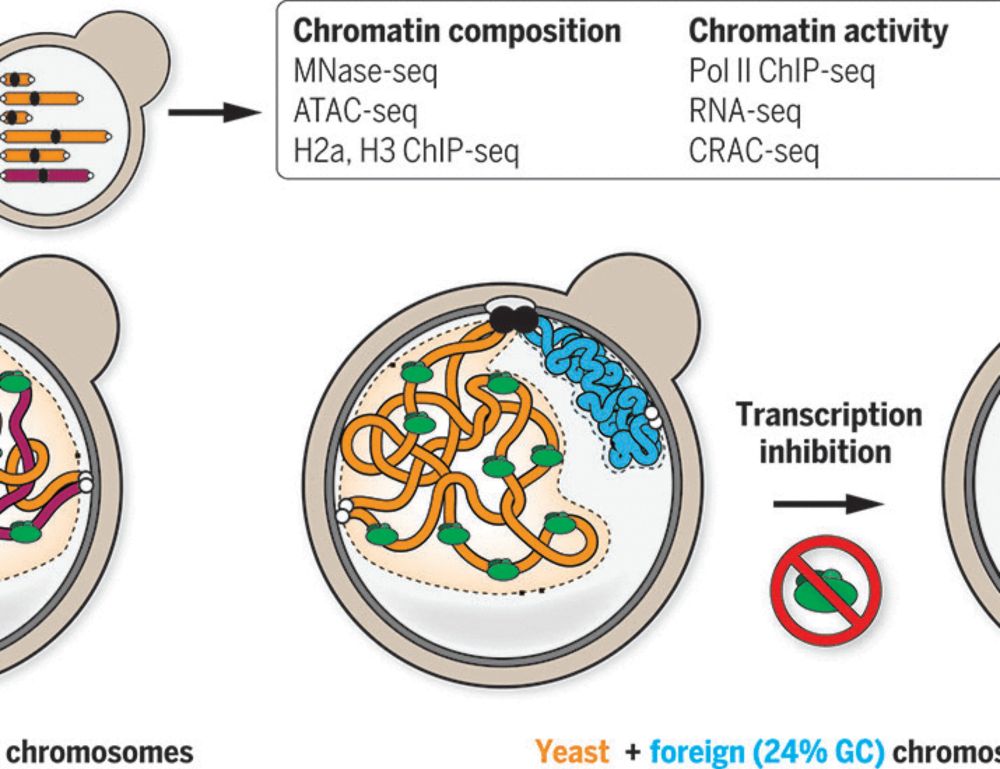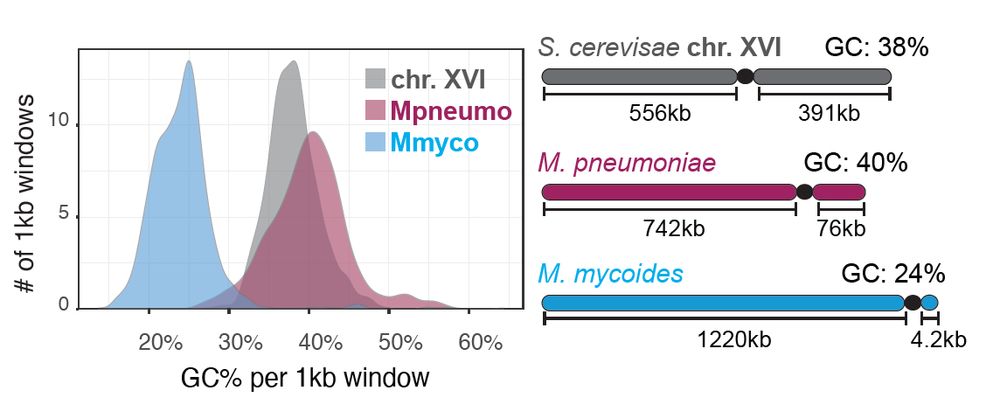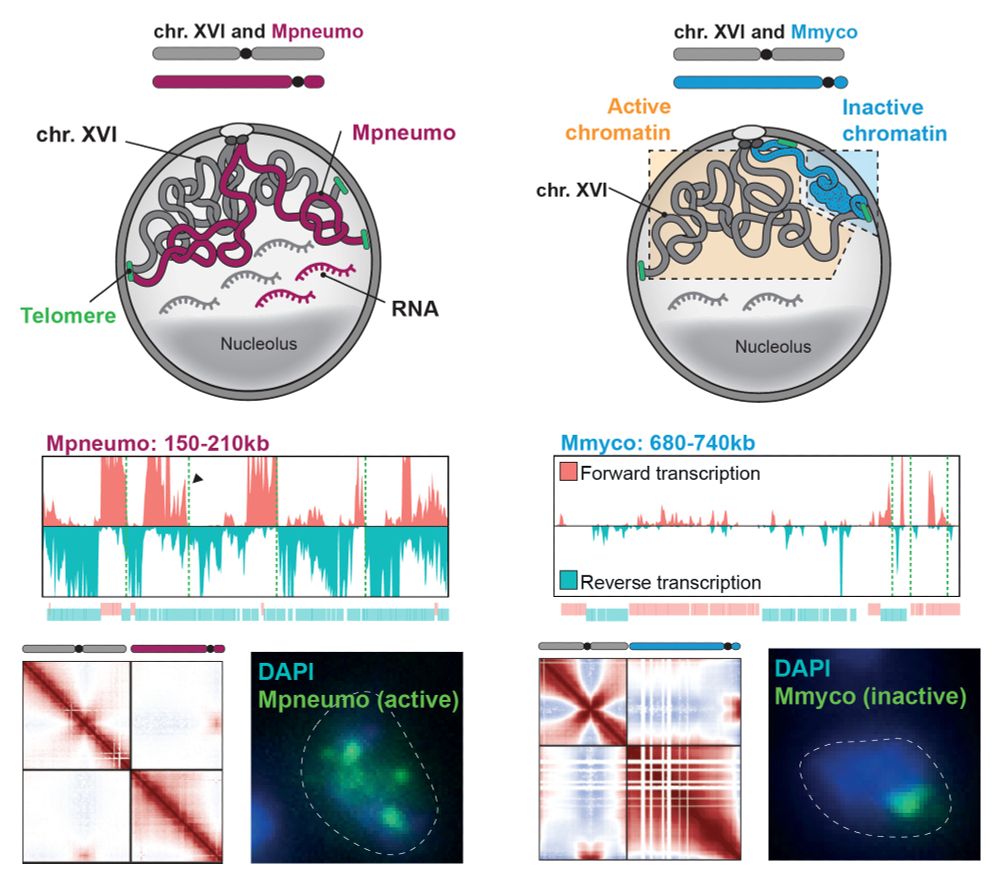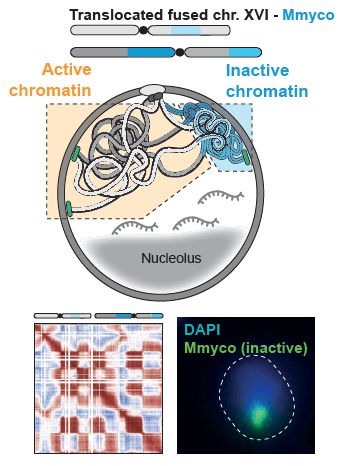- Our latest work: how can compartmentalization emerge in a eukaryotic genome lacking canonical heterochromatin? By investigating bacterial genomes put in yeast, we show that the presence or absence of transcription is sufficient! #chromatin #3Dgenome #generegulation www.science.org/doi/10.1126/... 👇
- Using MNAse, ChIP, ATAC, CRAC and RNA-seq, Hi-C and imaging, we characterized the composition, activity and folding of bacterial genomes of varying sequence composition introduced as supernumerary chromosomes into budding yeast. Depending on their GC%, their fate was surprisingly different.Feb 7, 2025 10:22
- Sequences close to the yeast GC are highly transcribed, somehow following the orientation of prokaryotic genes, and mix with yeast chromosomes. In contrast, a rich AT bacterial genome is not transcribed and forms a globule at the nuclear periphery, independently of SIR heterochromatin formation...
- Dispersed over several chromosomes, this inactive compartment is maintained until mitosis when cohesins compact all chromosomes similarly. Reducing transcription eliminates compartmentalization, with all yeast chromosomes now resembling the bacterial chromosome...
- Deep learning models (@chromozz.bsky.social) trained only on yeast chromosomes predict nucleosome positioning, RNA Poll II and cohesin tracks along foreign DNA, based on the sequence alone. This implies that the behavior of any DNA in a host cell follows deterministic sequence-based rules.
- This result suggests that simple sequence-dependent features could have contributed to the emergence of bipartite compartmentalization of genomes during evolution, either by sequestering inactive genetic material or by facilitating the functional integration of active sequences.
- All these results and much more can be found in our paper, a massive work led by @leameneu.bsky.social, @christophechapard.bsky.social, and Jacques Serizay who generated all the beautiful analyses. Thanks to all the contributors, esp. @chromozz.bsky.social and Alex Westbrook for the deep-learning!
- See also accompanying perspective by @gfudenberg.bsky.social and @vram142.bsky.social : Relating DNA sequence, organization, and function | Science www.science.org/doi/10.1126/...




